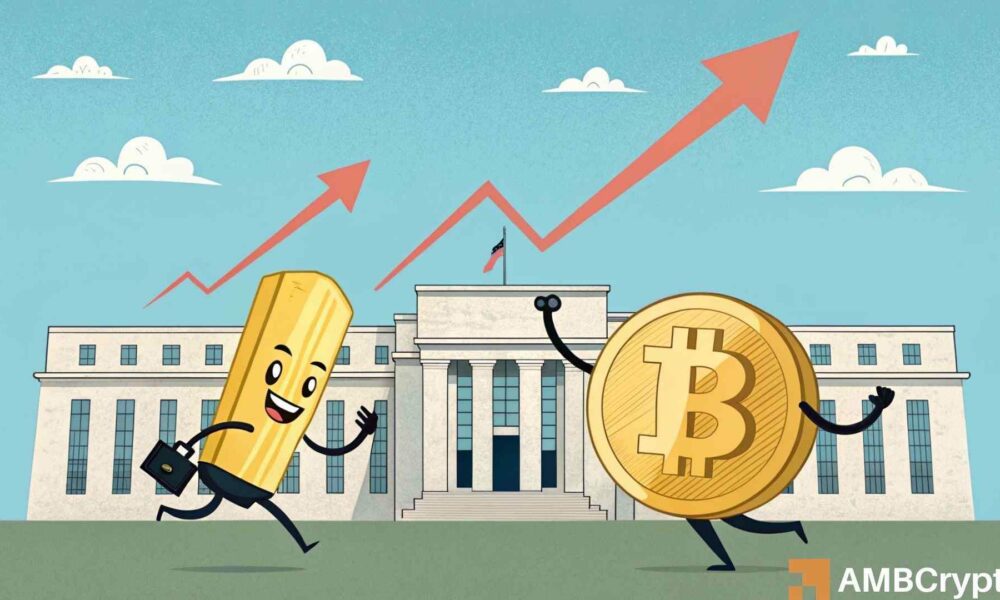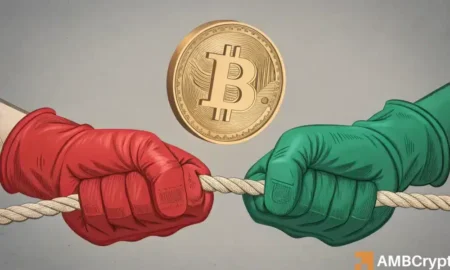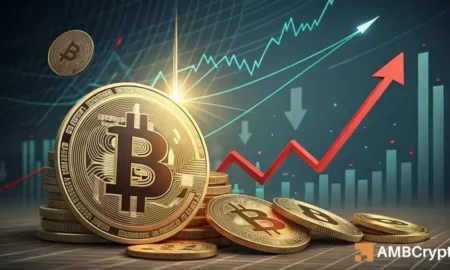Bitcoin’s Decoupling: A Shift Towards Safe Haven Status Amid U.S. Market Turmoil
In recent trading sessions, Bitcoin (BTC) has displayed a remarkable decoupling from the performance of U.S. stocks, opting instead to align itself with gold’s trajectory as a ‘safe haven’ asset. Over the past week, Bitcoin witnessed a commendable rally of 5%, reaching notable highs of $90,000. In stark contrast, the S&P 500 Index (SPY) recorded a 5% drop, and the tech-heavy Nasdaq Composite experienced a steeper decline of 6%. This shift indicates a pivotal moment for Bitcoin, whose traditional role as a risk-on asset has evolved considerably in light of current economic conditions.
Historically, Bitcoin correlated closely with U.S. equities, especially since early February when its Pearson Correlation with these markets was particularly strong. However, a shift began on April 15, marking a significant decoupling of Bitcoin from the S&P 500 and Nasdaq. As it broke away from these U.S. stocks, Bitcoin began to share a positive correlation with gold, further underscoring its emerging status as a refuge for investors amidst economic uncertainty and volatility.
Market analysts like Tom Lee, the Chief Investment Officer of FundStrat, have noted that Bitcoin’s potential to rise is substantial, especially when considering its previous all-time high (ATH) of over $100,000. Lee anticipates that Bitcoin may catch up to gold in terms of its value as a non-dollar asset, especially given the recent sell-off of U.S. dollar-denominated assets. This perspective aligns with a broader trend of investors seeking alternative stores of value, particularly in light of de-leveraging in U.S. markets.
The backdrop of this market activity has been characterized by ongoing political tensions, notably the feud between former President Donald Trump and Federal Reserve Chair Jerome Powell. Trump’s vocal criticism of the Fed, suggesting that Powell acted too late to cut interest rates, has fueled investor anxiety. Many perceive this as a threat to the independence of the Federal Reserve, contributing to a wider loss of confidence in U.S. markets and prompting a flight of capital towards assets like gold and Bitcoin.
Gold has also benefitted from this dynamics, reaching an unprecedented price of $3,500 per ounce, while Bitcoin has seen increased demand. Despite Bitcoin’s current upward momentum, it’s essential to recognize that 2025 has been a challenging year for the cryptocurrency, marked by a significant depreciation of more than 35% relative to gold. The evolving market landscape raises questions about whether Bitcoin’s new identity as a safe haven can help it recoup its losses against gold going forward.
Looking ahead, the trajectory of Bitcoin—and its relationship with traditional markets—remains uncertain. Analysts like Alex Thorn of Galaxy Digital have acknowledged Bitcoin’s current decoupling as noteworthy but caution that it may not be a sustainable trend. As investor sentiment shifts, the cryptocurrency market could face additional turbulence, driven by both economic and geopolitical factors. Investors and enthusiasts will be keenly watching to see if Bitcoin can maintain its newfound status or if it will revert to its historical correlations with U.S. stocks in the future.
















